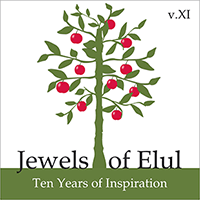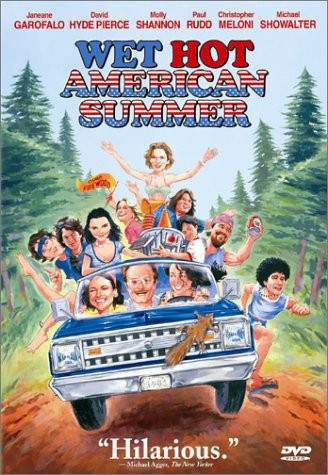 Every year for the past decade, iconic musical leader and silver fox Craig Taubman has published a sweet little book of inspirations prior to the Jewish High Holy Days. Jewels of Elul is meant to help get us in the mindset of praying, giving and repenting during the extra-cleansing month before Rosh Hashanah, which I find super helpful because the whole New Year thing sort of sneaks up on me. (Maybe that’s why I always burn the honeycakes.)
Every year for the past decade, iconic musical leader and silver fox Craig Taubman has published a sweet little book of inspirations prior to the Jewish High Holy Days. Jewels of Elul is meant to help get us in the mindset of praying, giving and repenting during the extra-cleansing month before Rosh Hashanah, which I find super helpful because the whole New Year thing sort of sneaks up on me. (Maybe that’s why I always burn the honeycakes.)
I had the honor of writing a jewel for the very first book (linked here, or scroll to the bottom of this post) and have delighted ever since in the sweet shorts contributed by many wise souls, Jewish and not. (Hey there, Dalai Lama, hey…)
For round 11, Craig asked his legions of fans and followers to submit their favorites, a precious necklace of crowd-sourced gems, if you will: Jewels of Elul: Ten Years of Inspiration is available starting this Friday, Aug. 15, otherwise known as the first day of the Hebrew month of Elul, and will come right to your inbox if you like.
The 29 shorts feature Elie Weisel, Anita Diamant (The Red Tent, y’all!), a whole bunch of rabbis including David Wolpe and Rami Shapiro, Pastor Rick Warren, brilliant feminist filmmaker Jill Soloway, Mary J. Blige, Arnold Schwarzenegger…and me.
Floored, y’all. Just floored. I can barely believe anyone takes the time to read anything I write, and I’m so humbled and honored that this tiny piece of my family’s experience has touched so many:
Learning How to Dance by Jessica Leigh Lebos
My mother-in-law’s mind is full of holes. She spends most of the day in a placid fog, a place where there’s nothing left to do but walk the dog and wonder what’s for dinner. Every time it’s chicken, she rolls her eyes and kvetches, “We had this last night!” No one argues with her anymore.The situation is undeniably tragic. She’s only in her early 60’s, has already suffered through cancer and a mastectomy, and her dementia has been diagnosed incurable.
Yet, her disease has set into motion a certain regeneration: Both of her sons have returned to Savannah to help care for her and to assume their roles as men alongside their father, who is finally learning to treat them like the mensches she raised. Her grandchildren — my kids — sit beside her and sing with gusto while she plunks out the same damn Disney song on the piano: “The Lord is good to me, and so I thank the Lord, for giving me the things I need, the sun and the rain and the appleseed…”
Whenever there’s music, she remembers exactly what to do. She snaps, she swings her arms; she’s particularly fond of jazz hands. This is endearing when “Funkytown” comes on the radio and she shimmies around the living room, less so when we’re in line at the grocery store and she sashays off in the direction of someone’s cell phone. My husband and I have made a family pact to never let her dance alone. Often we resemble a circus without a tent, a multi-generational band of spastic merrymakers getting down to the sound of the garbage compactor. Helping someone keep her grace doesn’t always look graceful.
We hold faith that God loves us so, and yet still, still, life hurts. Sometimes healing comes from accepting what is. Hope is learning how to dance with it.
****
Reading this a decade later, I tear up all over again. My mother-in-law, bless her, still lives and breathes, but the dementia has rendered her bedridden and speechless now for many years.
May all of us dance as long as we possibly can, and may the New Year bring us peace.
Thank you, Craig and Co., and I hope y’all will cherish these jewels as we head into 5776.







